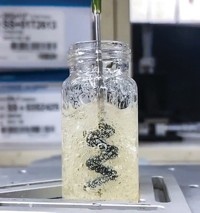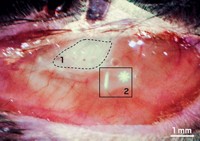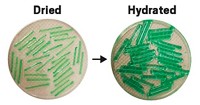Advertisement
Grab your lab coat. Let's get started
Welcome!
Welcome!
Create an account below to get 6 C&EN articles per month, receive newsletters and more - all free.
It seems this is your first time logging in online. Please enter the following information to continue.
As an ACS member you automatically get access to this site. All we need is few more details to create your reading experience.
Not you? Sign in with a different account.
Not you? Sign in with a different account.
ERROR 1
ERROR 1
ERROR 2
ERROR 2
ERROR 2
ERROR 2
ERROR 2
Password and Confirm password must match.
If you have an ACS member number, please enter it here so we can link this account to your membership. (optional)
ERROR 2
ACS values your privacy. By submitting your information, you are gaining access to C&EN and subscribing to our weekly newsletter. We use the information you provide to make your reading experience better, and we will never sell your data to third party members.
Biological Chemistry
Frozen zebrafish embryos thaw better with lasered gold nanorods
Cryopreservation technique combines nanorods with antifreeze to improve viability of widely used lab animals
by Jyoti Madhusoodanan, special to C&EN
August 20, 2017
| A version of this story appeared in
Volume 95, Issue 33
Zebrafish are widely used as model organisms for developmental biology research. But after being frozen and thawed, zebrafish embryos rarely survive, meaning they can’t be stored for later experiments or shared with other labs. Now, researchers report that propylene glycol, a biocompatible antifreeze, when combined with gold nanorods can improve the embryos’ viability when they are thawed (ACS Nano 2017, DOI: 10.1021/acsnano.7b02216). John C. Bischof of the University of Minnesota, Twin Cities, and colleagues injected the antifreeze-nanorod combination into zebrafish embryos and then froze them in liquid nitrogen. After a few minutes, the team thawed the embryos with a millisecond laser pulse. The nanorods absorbed the light energy and warmed the embryos quickly and evenly, limiting damage to cell membranes from needlelike ice crystals and damage to sensitive proteins. One hour later, 31% of the embryos were viable and developed normally over the next 24 hours. In contrast, embryos warmed conventionally using a water bath did not survive thawing because they were heated unevenly or not quickly enough.With further refinement, the researchers believe the technique could also serve as a tool to conserve endangered species that have large, hard-to-freeze embryos. The work is “very creative,” says Mehmet Toner of Harvard Medical School. “Zebrafish are a very important molecular biology tool, and the embryos are extremely difficult to cryopreserve, but this technique could make it cost-effective and practical for many laboratories.”





Join the conversation
Contact the reporter
Submit a Letter to the Editor for publication
Engage with us on Twitter